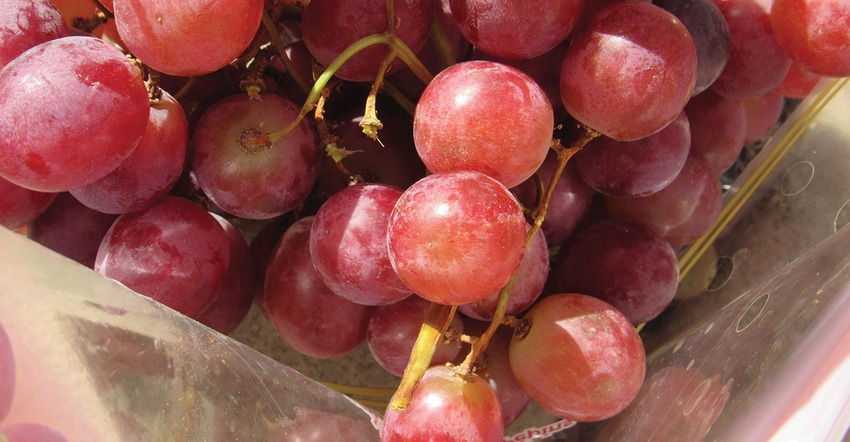
California grows 99% of America’s table grapes — some 80 different varieties coming from Coachella and San Joaquin Valleys — and available in U.S. stores from May through January. And the race with Mexican grape growers is on as both entities struggle to get product on store shelves to fill a traditional Memorial Day shopping surge.
The Sonora Grape Growers Association is projecting a minimum of 21.5 million 18-pound cartons to be shipped from the Nogales Port of Entry between early May and mid-July.
This year’s crop estimate is a bit less than the 2020 harvest (2 percent less) and down 11% from the 2019 crop. In speaking about the lighter crop, Juan Laborin, the Sonoran growers association president, said: “There are reports of vineyards or parts of them with very low yield prospects and while some cases do exist, it is far from the norm and not representative of the majority of vineyards. Our crop estimates are calculated with robust methodology and our statistical model numbers represent plus or minus five percent of the final crop.”
The south-of-the-border table grape crop has been growing over the last 25 years when some of the limits on farm size were removed. “Farm size increased and growers got more professional with their annual permanent crops,” said John Pandol, Grape Division Chairman for the Fresh Produce Association of the Americas.
“Not long ago, 80% of that volume could be found in the three basic varieties. Today 40% of what crosses the border is in the form of two dozen or more newer proprietary varieties.
“California and Mexico production have flip-flopped a bit,” he said. “If you go back 20 years, the Coachella Valley represented 75% of springtime grapes and Mexico posted about 25%. Today, that has flipped with 80% out of Mexico and 20% from California as Coachella Valley has lost out on some early season market share.”
And the competition may not necessarily be categorized as a friendly rivalry. “Probably more hostile than cooperative,” said Pandol, “as Mexico has become more of a reliable supplier as they’ve grown in size and default purchase orders have been going to the most reliable suppliers.”
A foot in both worlds
Representing both a California grower [Pandol Brothers Inc., since 1930] and Mexican suppliers, Pandol has a foot in both worlds. “Farmers have always had an in-town job and I work for Mexicans, Chileans, and Peruvians as a commission merchant for foreign product.”
Mexico’s production is expected to be lower this year. “A bit less than last year and a lot less than the year before that,” he said. “They’re struggling to get grades in the market before Memorial Day on up to the Fourth of July, subject very much to weather patterns where all grapes need to be off the vine before monsoon rains hit. Three quarters of Mexico’s production is within that short window because as soon as Central California grapes come in, folks tend to abandon those from Nogales.”
Peak season for harvest runs from the end of May till mid-June when 53% of product is picked.
Mexico’s largest volume is traditionally white seedless varieties, representing 44% of sales, closely followed by red seedless (43%) and black seedless coming in at a distant third (7%). The early- and mid-green pack-out estimate for both will run about 9.3 to 9.4 million cartons.
Read more about:
GrapesAbout the Author(s)
You May Also Like




